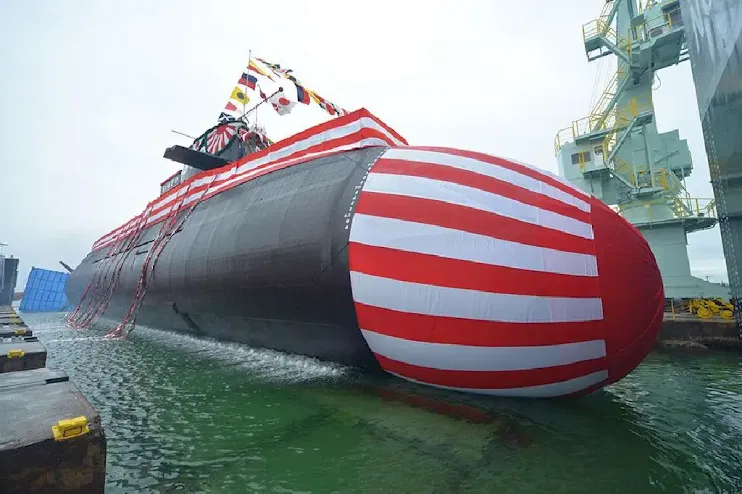On October 4, 2024, Mitsubishi Heavy Industries, Ltd. (MHI) held the christening and launching ceremony of the submarine “Chōgei” at its Kobe shipyard in Hyogo District. This 3,000-ton submarine is the fifth of the TAIGEI class, replacing the iconic SOURYU class, the backbone of the Japan Maritime Self-Defense Force. With its delivery to Ministry of Defense Scheduled for 2025, the “Chōgei” represents a very important step in strengthening the country’s naval capabilities.
A state-of-the-art submarine
The “Chōgei” is a very interesting acquisition for Japan because it incorporates advanced technologies that seek to improve its functionality, performance and profitability.
MHI has demonstrated on numerous occasions its ability to develop and build warships that meet the highest standards of innovation and efficiency.
The integrated management of the defense equipment business, covering land, sea and air, has allowed Mitsubishi Heavy Industries to take advantage of technological synergies and proactively respond to the maintenance needs of its products after their entry into service.
As the world faces growing geopolitical uncertainty, Japan has focused on shoring up its defensive posture. The “Chōgei” submarine is part of this broader strategy, which includes modernizing the armed forces and adapting to contemporary challenges, such as labor savings, unmanned operations, cybersecurity and cost reduction. of the life cycle of warships.
The christening and launching ceremony, although significant, is only the first step in a process that will take time. After the ceremony, the “Chōgei” will undergo a series of tests at sea in order to verify the operation of all its systems and equipment.
This process is essential to ensure that the submarine meets quality and safety standards before being effectively integrated into the Japan Maritime Self-Defense Force fleet.
During the trials, different aspects will be evaluated, such as maneuverability, responsiveness of weapon systems and the overall performance of the submarine in various maritime conditions.
Upon successful completion of the tests, the “Chōgei” will be officially handed over to the Maritime Self-Defense Force, allowing it to begin operating on defense and security missions.
With the delivery of this technological innovation, the Asian country reaffirms its commitment to the modernization of its naval forces. The TAIGEI class, of which this new submarine is a part, has been designed to be more efficient and versatile than its predecessors.
This is especially relevant in an international context where tensions in the South China Sea and increased military activities in the region require an appropriate and effective response from Japan.
In addition, the development company has expressed its intention to continue the development of new submarines that adapt to the changing needs of the defense environment. This includes exploring innovative concepts that transcend conventional frameworks and respond to the demands of an ever-changing world.
The “Chōgei” is a clear example of the significant investment that Japan has been making in recent years in its maritime defense capacity and the way in which local companies have gained great participation in order to achieve this mission.
All these decisions are framed in a context in which maritime security is increasingly important. The development of this innovative project not only represents an advance in the country’s defensive capacity, but also a commitment to peace and stability in the region.



![[Img #74675]](https://thelatestnews.world/wp-content/uploads/2024/12/They-discover-a-new-class-of-X-ray-sources-in-the-150x150.jpg)












Add Comment